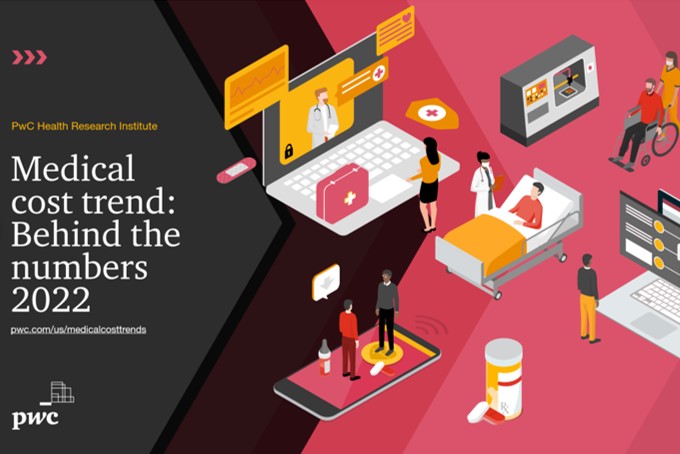PwC Health Research Institute Report Identifies Significant Healthcare Inflation Trend in USA
An extensive report from PwC Health Research Institute points to rising healthcare costs in the USA, driven by a range of factors that of course include the aftereffects of the recent pandemic. This trend, quite possibly a significant underestimate of total spend pressures, creates real challenges for Americans, who already wrestle with the most expensive healthcare system in the World. However, in contrast, it represents a strong signal that the Cayman Island’s recent decision to expand its medical tourism focus is in fact a wise and timely one, as Americans are forced to seek lower cost alternatives.
DRIVERS OF COST PRESSURES
The report cites two distinctly different types of cost pressure – those that take the form of inflationary or direct cost pressures and those that are more related to changing patterns of usage, or health consumption per capita. Examples may include:
Inflationary Pressures
- Extra infection control costs
- shortage of staff creating agency cost pressures
- Provision of personal protective equipment
- Investment in necessary technology
- Increased indemnity costs
Consumption Pressures
- Deferred treatment pressures
- Later treatment of cancers e.g. at stage 3 vs. stage 1
- Increased drug & alcohol-related costs
- Emerging significant mental health issues
- Effects of reduced exercise
The US system has been less vocal that others as to the true backlog of care that has been seen in places like the United Kingdom, where waiting lists have soared and Department of Health & Social Care leaders are regulated quoted as saying it will be more than 5 years before they are back to pre-Covid waiting list sizes. However, Covid-19 has affected both systems and it is likely that significant backlogs exist in both systems. Whereas the UK health system tends to respond with longer waiting times, the US tends to seek to manage demand pressures by adjusting prices, upwards, a ‘market forces’ effect.
DRIVERS OF ILL HEALTH
A worrying trend identified in the PwC report was the rise in disease-contributing behaviours at the expense of disease-preventing behaviours. For instance, providers, nurses and primary health physicians are reporting a 71% increase in moderate to significant increased alcohol consumption, a 67% moderate to significant increase in poor nutrition and even a 55% moderate to significant increasing in the smoking of cigarettes. At the same time, they report a 66% moderate to significant decline in physicial exercise, and even greater declines in mental health (measured as increases in mental health problems).
None of this is good news. In an era where supply chains are disrupted, capacity is short and healthcare workers are exhausted, it points to a time-bomb of healthcare effects that all serve to push up utilisation and costs. Inevitably for many, the rise in associated insurance costs will push certain aspects of care outside the reach of the average American, at average American rates, forcing populations to seek alternative ways to address healthcare need and employers to explore alternatives to providing individual health insurance, such as accelerating the trend for larger companies to take the self-insured route and seek out lower cost healthcare.
MEDICAL TOURISM BOOST
The US already sees 1.2 million citizens (based on pre-pandemic data) travel annually for care abroad, in both optional healthcare such as cosmetic surgery and functional or necessary healthcare, such as elective surgery. As a result, citizens will likely face an increasing number of barriers to affordable access literally forcing them to seek alternatives or go without, including:
- Insufficient capacity or unacceptable access time i.e. waiting time
- Market supply forcing up US healthcare costs
- Inflationary pressures further increasing costs
This couldn’t come at a better time for the Cayman Islands, which in December 2020 signalled its intention to expand medical tourism by approving a further significant medical tourism facility to be known as Aster Cayman Medcity. This will ultimately result in two JCI-accredited, quality-focused institutions and ensure that the Cayman Islands leads the Caribbean in both the capacity and the calibre of facilities available.
And the Caribbean itself is a region with a rapidly emerging challenging, highlighting another impact of the rising costs in the US. Almost every Caribbean Island nation is reliant on the US health system for its tertiary and quaternary care, in areas such as cancer, major surgery, neonatal intensive care and other highly complex specialties where a small population does not easily support the infrastructure or case volume necessary for safe and effective care. Inevitably, they turn to their nearest major neighbour, the United States, to fulfill this role.
The pressures facing US citizens are amplified across Caribbean countries and health systems, where the near-total disruption of cruise tourism, along with significant impacts of disrupted travel on stayover tourism results in the added difficulty of a combined set of pressures – increased US healthcare costs at a time of reduced national financial capability.
Simply put, Caribbean Nations are going to find themselves also needing meaningful alternatives to the US healthcare system and the Cayman Islands, one of its own, just might be providing the right services, at just the right time.
Access to the PwC Health Research Institute Report:


